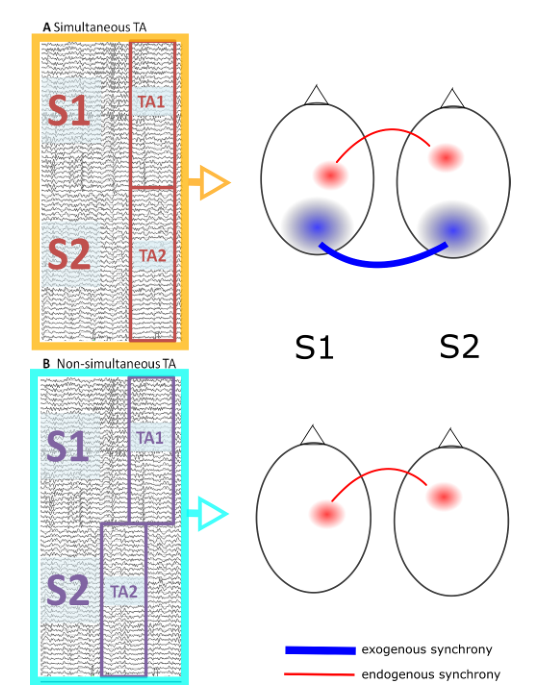My thesis manuscript is available !
The manuscript of my thesis “Methods for Multi-Subject Electroencephalography and application to Brain-Computer Interfaces” has finally be published online (>>download on HAL<<). Of course, not everyone has the time and the motivation to read the 137 pages (225 with annexes) in French, so an abstract in english is also available in the previous blog post. The related scientific publications are available here. The manuscript contributes in several news methods for simultaneous multi-subject electroencephalography (i.e. hyperscanning) in three converging fields:
- Experimental design: I proposed to use multi-subject brain-computer interfaces to study social interactions and developed a multiplayer version of Brain Invaders,
- Signal Processing: A new method of Blind Source Separation using a composite model that is able to extracts EEG sources with a low signal-to-noise ratio such as event-related potentials with at density EEG (16 electrodes and less),
- Classification: I extended the Riemannian Geometry framework for EEG classification when several subjects are available.
Additional content
The material of the defense is also available (slides). Unfortunately, out the two hours+ of presentation and Q&A, only the first 29 minutes and 59 seconds of the defense were recorded in video (explanation here). I’ll post the video anyway with the hope that a incomplete demonstration will make a great teaser for the manuscript and/or to learn French.
About the thesis defense
This defense took place October 17th, 2018 at GIPSA-lab in front of the following jury:
Eric Moreau (President), Laurent Bougrain (examinator), François Cabestaing (reviewer) , Yannick Berthoumieu (reviewer), Christian Jutten (thesis supervisor), and Marco Congedo (thesis supervisor).
We had a nice time afterward with a buffet with local food and equally high quality local beverages (you missed a great deal if you couldn’t make it).
Acknowledgements
I would like to thanks all the members of the jury to have given me the honor to defense my work and for their sharp feedback that helped me improve the last version of the manuscript. Of course, I’ll add an extra thanks to my advisors Pr Jutten and Dr Congedo that paved the way during this years. A more exhaustive list of awesome people to whom I’m grateful is available pages v to vii of the manuscript. I hope you’ll find your name there. If you believe that your name has been unfairly forgotten please accept my apologies and fill a “You’re so ungrateful!” request.
The after match
Since the defense, things are working out for me as independent researcher. I’ll kept you informed of the next publication on this blog and you can follow my public research on googlescholar and GitHub. And if I don’t, I’m probably too busy petting my cat while reading the dankest neuroscience books.
LEGEND: Figure of the page 57 of my thesis: we designed a multi-subject brain-computer interface with controlled external stimuli in order to differentiate exogenous inter-brain synchronizations from endogenous inter-brain synchronizations. I argument that this kind of experimental design will help to better understand the result from inter-brain synchronization (e.g. inter-brain connectivity metrics, inter-brain correlation, etc.).
